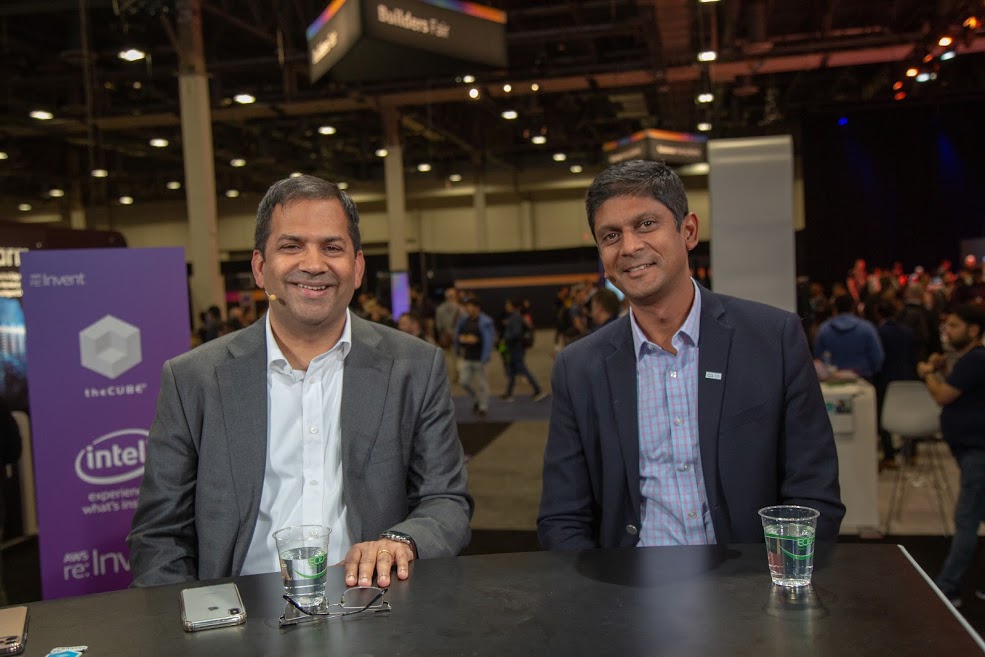 SECURITY
SECURITY
 SECURITY
SECURITY
 SECURITY
SECURITY
Traditional views of enterprise security are rapidly evolving from a strict perimeter defense to keep bad actors out to a more nuanced approach that takes into account user behavior and the context of network interactions.
A login to a company network from a Starbucks location where employees are based may seem fine, but if it triggers a login in another country at the same time, that may be worth closer examination.
“The problem of traditional security was all infrastructure-centric – guns, guards and gates,” said Ravi Srinivasan (pictured, left), vice president of solutions and platform marketing at Forcepoint LLC. “It turned out, those bad actors figured out those guns, guards and gates and were always looking to compromise users and their access. We’re focused on digital identities and cyber behavior to protect data and humans as well; it’s what we refer to as human-centric cybersecurity.”
Srinivasan spoke with John Walls (@JohnWalls21) and Lisa Martin (@LisaMartinTV), co-hosts of theCUBE, SiliconANGLE Media’s mobile livestreaming studio, during the AWS re:Invent event in Las Vegas. He was joined by Rohit Gupta (pictured, right), global segment leader of security at Amazon Web Services Inc., and they discussed greater focus at the board level on cybersecurity and how Forcepoint builds a contextual picture to identify potential threats. (* Disclosure below.)
A New York Stock Exchange whitepaper found that more than 80% of companies surveyed now discuss cybersecurity at most board meetings. Heightened awareness of issues surrounding data protection and risk of attack have brought significant focus to the tools that Forcepoint and major cloud providers, such as AWS, can provide.
“Security used to be an afterthought; the developers were not concerned about it,” Gupta said. “It’s now a board-level or even a regulatory-level discussion. You do not want to end up in the news.”
Avoiding the news cycle because of a significant breach that could affect millions of customers requires awareness of internal networks and the ability to spot potentially malicious actions. Forcepoint’s solutions focus on context to provide an organization with a behavioral model that will spot anomalies quickly.
“Context is built out of three things: users, devices and the environment,” Srinivasan explained. “By triangulating on those three things, you can capture very subtle needles in the haystack. The time to steal data is in minutes, but the indicators that it takes to steal that data have been building up.”
Watch the complete video interview below, and be sure to check out more of SiliconANGLE’s and theCUBE’s coverage of the AWS re:Invent event. (* Disclosure: Forcepoint LLC sponsored this segment of theCUBE. Neither Forcepoint nor other sponsors have editorial control over content on theCUBE or SiliconANGLE.)
THANK YOU